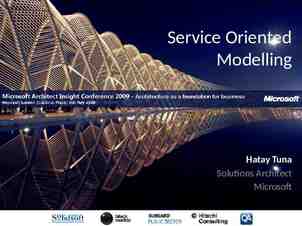THE PLANNING PROCESS by Jeanne Nyquist Top Mgt. Strategic Mid-Mgt.
40 Slides841.50 KB
THE PLANNING PROCESS by Jeanne Nyquist Top Mgt. Strategic Mid-Mgt. Tactical First-Line Mgt. Operational
WORKLOAD PLANNING Annual Plan Quarterly Plan Weekly Plan Daily Plan —Capital Plan for Engineers —O&M Objectives for Maint. —Reasonable Milestones —Specific deliverables —Detailed schedule
OPERATIONAL MANAGEMENT Work Planning Metrics: Inventory Annual Goal Performance Standard Resource Requirements Schedule
Annual Operational Planning Determine requirements for: Annual maintenance cycle Standard daily accomplishments Seasonal/monthly goals
Annual Operational Planning Match resources to requirements Make choices – set priorities Reality check – are we meeting requirements?
Work Scheduling: PM Geographically based Adjust cycles to physical characteristics & conditions Determine consequence of failure Define responsibility for planning/scheduling work
Work Scheduling: Repair Dig No–Dig Establish backlog standard
Work Scheduling: Rehabilitation Establish threshold trigger for rehabilitation Use team approach – Ops & Engr Planning long-range to meet regulatory requirements
Work Scheduling: Special Projects Manage demand for: Emergencies Backups Roots/FOG Engineering projects Political response Assistance to other depts./agencies
Tools: Project Concept Define Goal Define Major Steps – List Resources Needed Define Obstacles – List Solutions or Contingencies Identify Key Stakeholders Identify Team Members
Tools: CPM Charts
Tools: Gantt Charts Gantt Chart: Construct Curb Ext.
Tools: Gantt Charts
Tools: Timelines
Tools: Pert Charts Public Notification – Curb Ext.
Reporting Tools Work Order Crew Reports Management Reports (weekly/monthly) Design reports for the audience Ops, Engr. Mgt Get Buy-In
Work Management Problems Scope creep Managing stakeholder interests and expectations Inadequate communication Blown timelines Material/equipment problems Unreliable contractor
PERFORMANCE MANAGEMENT & EMPLOYEE EVALUATION What are we trying to accomplish? – Output – Behavior Quarterly Objectives
PERFORMANCE MANAGEMENT
THE THREE P’S PEOPLE PERFORMANCE PLANNING PERFORMANCE COACHING & EVALUATION
PEOPLE Control vs. Commitment Control Commitment
PEOPLE UNDERSTAND THE INDIVIDUAL UNLOCK HUMAN POTENTIAL COACH WITH EMPATHY
PERFORMANCE PLANNING ENCOURAGE SELF-MOTIVATION CONNECT INTERESTS SET GOALS FORGE A COMMITMENT
Maslow’s Hierarchy of Needs SELF-ESTEEM RECOGNITION & RESPECT BELONGING SAFETY and SECURITY SURVIVAL
GOAL SETTING: Involve employee in setting goals: – Performance Development – Project/Program Accomplishments – Career Development
SET SMART GOALS: Specific Measurable Attainable Realistic Time-Sensitive
PERFORMANCE COACHING MOLD EMPLOYEES TO: Think for Themselves Take Initiative Solve Problems
COACHABLE MOMENTS: Performance Results Job-Task Progression Innovation and Creativity Negative Performance Results Job-Task Retrogression Mistakes or Lapses
FEEDBACK MODEL State the expectation Describe what the employee did – Describe specific behaviors – Do not assume intent Describe the impact Describe the goal Determine what should happen next
FEEDBACK SKILLS CORRECTIVE COACHING Use good judgment – don’t be judgmental Have civilized dialogue – don’t debate or berate Provide employee opportunity to solve problem Work toward a positive future outcome
FEEDBACK SKILLS DELIVERING A DIFFICULT MESSAGE Modify feedback style for individual Be cognizant of tone & manner Keep anger out of the picture State the problem – be specific Determine the root of the problem Develop solutions State expectations & check for understanding Make a note of your discussion
WHEN IT ISN’T WORKING OUT . . . Consult with manager and HR Restate your expectations Establish corrective actions Check for understanding Observe implementation Document every step Terminate within probationary period if performance is not acceptable
PERFORMANCE APPRAISAL Continual process Memorialized by periodic review Goal is to: – Review past performance – Set goals for future performance – Plan for employee’s development Make the process participative
PREPARING TO APPRAISE Review appraisal form Have job responsibilities changed? How have circumstances impacted performance? Check your performance notes Prepare to meet with employee
PREPARATORY MEETING MEET WITH EMPLOYEE TO PREPARE: Explain collaborative process Acknowledge any changes in expectations up front Ask employee to do self-rating Ask employee to identify goals Schedule appraisal meeting
APPRAISAL MEETING REVIEW PAST PERFORMANCE: Job responsibilities Core competencies Progress on goals
APPRAISAL MEETING PLAN FUTURE PERFORMANCE Agree on goals – Program/Project Goals – Performance Development Goals – Personal Development Goals Complete Action Plan – Identify resources, timelines, benchmarks – Identify what support you’ll provide
APPRAISAL TIPS Schedule adequate time Prepare in advance Give the employee time to prepare Put the employee at ease Use the feedback model Check for agreement/understanding Adjust your style to the individual
APPRAISAL TIPS Make appraisal a continual process Use ongoing debriefing Check in periodically between formal appraisal discussions Consider asking employee to give you feedback
A PARTING THOUGHT . . . The most rewarding work is helping other people realize their potential.













































